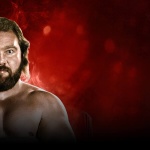
In order to be a legend you have to learn from and study the legends.
A legend today is known for their noted celebrity and larger-than-life accomplishments, whose fame is well-known.
The friendly, bearded face of Caroll Spinney may not be one you recognize immediately. But if you have watched TV at any point in the past 50 years or so, you are almost certainly familiar with his work. Since 1969, he has played the parts of the gentle, inquisitive Big Birdand the lovably disgruntled Oscar the Grouch on “Sesame Street,” the long-running children’s program.
This Thursday, as he so often has, Spinney, 84, plans to travel to the studios in Astoria, Queens, where “Sesame Street” is produced, and record some voices for his colorful alter egos.
Then he will retire from the program: His roles will be passed on to new performers and his remarkable half-century run, in which he has embodied two of the most beloved characters on television, will come to an end.
Sesame Workshop, the nonprofit education organization that produces “Sesame Street,” did not have a precise figure for the number of episodes Spinney has appeared in, but a spokeswoman said the number was likely thousands of the more than 4,400 episodes that have been created.

Spinney, who spoke last week from his living room here, seated next to his wife, Debra, said that he had few if any regrets about his time on “Sesame Street.”
“I always thought, How fortunate for me that I got to play the two best Muppets?” he said. “Playing Big Bird is one of the most joyous things of my life.”
[See where to stream a great documentary about Big Bird]
Asked if he had long been contemplating his departure from “Sesame Street,” where he has worked since its debut, Spinney answered, “No, not at all.”
But in recent years, Spinney said, the physical requirements of performing the characters had become difficult for him, and he had developed problems with his balance. He stopped doing the puppeteering for Big Bird in 2015 and has since been providing only the voices for him and Oscar.
The impending 50th anniversary of “Sesame Street,” for which his final voice recordings will be used when it is celebrated on the show — the episodes will run next year on HBO and in 2020 on PBS — seemed like a good moment to take a bow.
Debra Spinney said, “It’s just the fates that bring things to a head sometimes.”
Throughout their Bavarian-style chalet house are countless mementos that Spinney has collected from a lifetime of playing an 8-foot-2 avian and a monster who lives in a garbage can.
There’s the rocking chair with Big Bird’s gargantuan, disembodied orange and pink legs attached at either side; the congratulatory letter Spinney received on his 75th birthday from then-President-elect Barack Obama; the wall of photographs in which Spinney has posed with other TV luminaries like Sid Caesar, Bob Hope and Jerry Seinfeld.
Several pictures show him working alongside Jim Henson, the iconoclastic creator of the Muppets, who recruited Spinney to “Sesame Street” all those years ago.
Although they had previously crossed paths in the 1960s, Spinney pinpointed a fateful encounter at a Salt Lake City puppeteers’ festival in 1969, when Henson watched him try to perform a multimedia show that went gradually awry.
As Spinney recalled, Henson came to him afterward to say, “I liked what you were trying to do.”
Soon after, Henson invited Spinney to play two Muppet characters that were being developed for “Sesame Street,” which made its debut on public television later that year. One was Oscar, who was envisioned as a cranky, trash-loving purple character. (He was orange in his earliest appearances, before taking on his familiar green hue.)
The other was Big Bird, who was performed in a full body costume and who, Spinney said, he was originally asked to play as “a funny, dumb country yokel.”
After a few episodes, Spinney made a suggestion to the show’s producers. “I said, I think I should play him like he’s a child, a surrogate,” he recalled. “He can be all the things that children are. He can learn with the kids.”
That had a lasting effect on Big Bird and on “Sesame Street,” where the character came to embody the tender, nurturing soul of the show.

“Big Bird has always had the biggest heart on ‘Sesame Street,’ and that’s Caroll’s gift to us,” said Jeffrey Dunn, the president and chief executive of Sesame Workshop. “I think it’s fair to say that Caroll’s view of the world and how we should treat each other has shaped and defined our organization.”
The character became an instantly recognizable symbol of youthful guilelessness, traveling the world and appearing on other TV shows like “Saturday Night Live,” “The West Wing” and “The Colbert Report.” Big Bird was the protagonist of the 1985 “Sesame Street” feature film, “Follow That Bird,” and Spinney was the subject of a 2014 documentary, “I Am Big Bird.”
Spinney has said that over the years his work on “Sesame Street” acquainted him with countless fans who could not help but tell him — often with eyes full of tears — how the show had changed their lives.
[ What did you love about Big Bird or Oscar the Grouch? What lessons did they teach you and your family? Please share your reflections in the comments. We may publish a selection. ]
He spoke of a woman he met in Cambridge, Mass., who related how a chance encounter with Oscar the Grouch in her adolescence taught her it was permissible to stand up for herself.
While wandering through the TV channels, Spinney said, the woman came upon “this strange creature saying no.” As she later told him, “I didn’t know you could say no to an adult.”
“Sesame Street” was also responsible for introducing Spinney to Debra, who was working in the community education department of what was then called Children’s Television Workshop when they first met, in 1972. “I couldn’t believe Big Bird was coming up and talking to me,” she said of their earliest interactions.

Though Oscar and Big Bird seem to have little in common, Spinney observed that they were both solitary characters who performed with other humans but few other Muppets. That suited him, he said.
“I’m a soloist,” said Spinney. “I’m not good with a team. I’m out of sync with the rest. They’re all going left at the same time, while I’m the only one going right.”
More forlornly, he said that it was “very lonely in there” playing Big Bird. “I was separated from everybody.”
Matt Vogel, who has been Spinney’s apprentice on Big Bird since 1996, will succeed him in the role.
Vogel, who has also inherited the parts of other popular Muppets, including Kermit the Frog and Count von Count, said he saw the task of carrying on Spinney’s legacy as “daunting and important.”
“The more I do the character, the more that I try to preserve what I think Caroll’s intentions were,” he said. “Inevitably, part of our own personality starts to creep into those characters. But that’s the way they live on.”
At his departure, Spinney will be one of the last surviving “Sesame Street” staff members who has been with the show since its very beginning.
In some form or another, he plans to remain an ambassador of “Sesame Street,” at conventions and other public appearances. “I’ll be 100 years old, doing Muppet stuff,” he said.
He recalled how he and Henson used to imagine themselves “being old” — by which they meant, in their 70s — “doing Muppets the rest of our lives.” Henson, who died in 1990 at age 53, “didn’t get that chance, but I will be,” Spinney said.
Big Bird shows up frequently in the artwork that Spinney creates and surrounds himself with at home. That collection includes paintings like the one he calls “Going Home,” in which Big Bird is seen approaching an enormous tree, its many branches colonized by countless birdhouses.
Another Spinney painting, titled “In My Dreams I Can Fly,” shows Big Bird — who is traditionally depicted as flightless — with his wings spread as he soars high above the countryside.

Repeating a phrase he has often used to describe his relationship to the compassionate Big Bird over the years, Spinney said, “I don’t get to play him — I get to live his life.”
Though the role would no longer be his, he was hanging onto a portion of the playful spirit that came with it.
“I’ve been playing a 6-year-old for 50 years,” Spinney said. With a bit of mischievous glee, he added: “And the children bought it.”

You can check out the latest casting calls and Entertainment News by clicking: Click Here
Click the logo below to go to the Home Page of the Website
Click the logo below to follow ETInside on Twitter
Click the logo below to follow ETInside on Facebook
Click the logo below to follow ETInside on Instagram
Click the logo below to follow ETInside on Pinterest
Click the logo below to follow ETInside on Medium
















